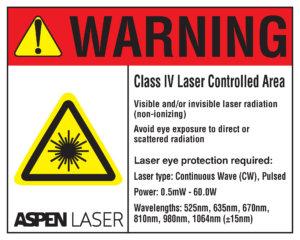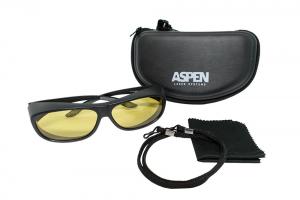Essential Guidelines: Class 4 Laser Safety Requirements
Does your practice have a Laser Safety Program? Does your staff conduct an annual audit to determine compliance with class 4 laser safety requirements?
It is always possible to set up and follow some basic guidelines. Laser therapy is extremely safe when basic protocols are followed by the laser operator and support staff. However, as with all healthcare procedures, some element of risk is present through negligence or accident. These hazards are easily prevented or reduced with safety protocols for each application.
Of all hazards, complacency is the most dangerous, and it is imperative to develop a risk management perspective on laser safety. Proper safety management requires a fourfold approach, including knowledge of standards, identification of risks, implementation of appropriate control measures, and consistent program audit to demonstrate quality assurance.
Follow general guidelines to enhance safety in your practice, including class 4 laser safety requirements.
Find out more about the Laser Safety Training & Certification Program.
Laser Safety Supervision
Every practice using a laser should have an individual trained in the safe operation of laser therapy and regularly use a safety checklist. This individual, often the doctor, is the Laser Safety Officer (LSO).
State Rules and Regulations
Each state has varying levels of rules and regulations regarding medical lasers. Some states require that a laser is registered with the Board of Health. Other states require that an annual or biannual fee is paid. In general, most states allow therapy lasers to fall under the scope of practice of most healthcare disciplines.
Safe Location
Select a secure, adequately equipped, and well-ventilated location to install and operate the laser. Do not allow nonessential personnel into the treatment area during laser therapy.
Safety Warning Signs

The class 4 laser safety requirements must have specific Warning Signs for the safe operations of each laser system. These signs must be in view outside and inside the room where the laser treatment is being performed and must meet ANSI recommendations.
Eye Protection

Therapy Lasers emit both visible and invisible radiation. Protective eyewear is safety goggles necessary for Class IIIb and Class IV lasers where eye irradiation is possible. Required users include the treatment administrator, the patient, and others in the room.
Not all safety goggles are the same. The protective eyewear that came with your laser is manufactured specifically for the wavelengths emitted. Do not use protective eyewear from other manufacturers, as they may not provide the appropriate level of protection.
Important
- Never look directly into the end of any therapy handpiece.
- Never direct the laser light into the eyes or the laser beam at anything other than the area to be treated with or without the correct safety goggles.
Before Treatment
Remove all reflective objects (such as rings, metal watch bands, and jewelry) before laser treatment. Indirect or direct eye contact with the laser beam or with scattered laser light from any reflective surfaces may cause eye damage,
During Treatment
Only allow untrained personnel to operate the laser device if directly supervised by a properly trained and experienced individual.
Never leave the laser device in the READY mode unattended. Always put the laser in STANDBY mode or switch the device OFF before adjusting or preparing the hand, piece, or fiber optic.
If the laser uses a key, remove the key from the laser device’s key switch when not in use to prevent unauthorized and/or unqualified use of the laser device and inadvertent laser emissions.
After Treatment
Turn the laser device off before relocating equipment in the same vicinity. If disconnecting the fiber cable and handpiece from the laser device, always clean the fiber tip before inserting it into the emission port. A dirty tip will result in damage to the unit.
Avoid using flammable anesthetics or oxidizing gases such as nitrous oxide (N2O) and oxygen. Solvents, adhesives, and flammable solutions used for cleaning and disinfecting should evaporate before the laser equipment is used.
If the laser fails to operate correctly, do not use it and contact the Laser Manufacturer immediately. There are no user-serviceable components inside this laser device. Therefore, do not attempt to open or gain access to any internal device component.
Class 4 Laser Safety Requirements
- Appropriate warning signs were posted.
- Access to the laser and treatment area is secure and controlled.
- Visually inspect and clean all optical connectors for dirt, debris, etc.
- Inspect the laser for proper function.
- Visually inspect and clean all safety goggles.
- Goggles are available for all persons in Treatment Area (Nominal Hazard Zone)
- Extra goggles are placed outside the treatment room if necessary.
- Sources of potential laser beam reflection and scatter controlled
- Treatment protocol established for the patient.
- Laser injury management protocol in place for accidental injury.
- Document laser treatment and post-treatment outcome.
Learn more about class 4 laser safety requirements and training options from Aspen Laser in the link below.
This blog was originally published on March 30, 2020, and was last updated on June 28, 2023.
References in this Article
https://www.lia.org/resources/
https://www.osha.gov/SLTC/
https://www.osha.gov/dts/osta/
https://www.accessdata.fda.
This blog was originally published on October 28, 2019, and was last updated on June 06, 2023.




